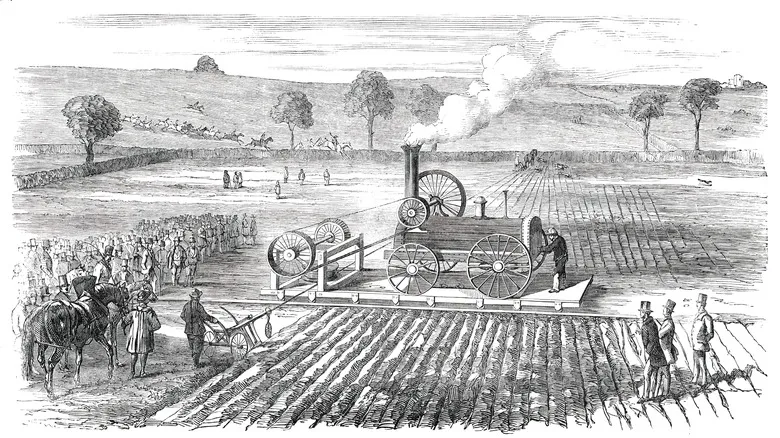How the Industrial Revolution changed the way we eat

If there is a single moment in history that significantly influenced our current eating habits, it would be the Industrial Revolution of the late 18th century. Prior to this period, people lived in an agrarian society where food was primarily produced through manual farming methods, which limited production capacity and necessitated a high degree of self-sufficiency, particularly among the lower classes. However, as technology advanced during this era, urbanization took hold, drawing individuals from rural areas into cities for employment. This shift, coupled with innovations in agricultural technology, led to an increase in mass-produced food, fundamentally altering lifestyles and eating patterns.
Key industrial advancements included mass production techniques and enhanced food distribution systems, such as railways and refrigerated train cars, which enabled the transportation of perishable goods over greater distances. Previously, food sources were localized, and it was uncommon to find a wide variety of fresh produce at local shops. Additionally, the mass migration to urban centers created a heightened demand for changes in food production and distribution. This transformation coincided with a rise in manufacturing jobs, providing people with more disposable income to spend on food.
Moreover, industrialization prompted a reevaluation of eating habits, particularly as work hours extended. During this time, breakfast became a quick meal consumed before heading to work, while lunch was often a light snack, such as peanuts and soda, intended to sustain individuals until they returned home for dinner. As time went on, especially after World War II, there was a notable shift towards processed foods, largely due to more women entering the workforce and having less time to dedicate to cooking.
Do we actually need to eat three meals a day?

In contemporary society, consuming three meals a day has become standard practice, but is it truly essential? The answer varies. A 2015 study published in the Journal of the Academy of Nutrition and Dietetics reveals that the number of individuals eating three meals daily has notably decreased since the 1970s. This shift may be attributed to the fact that the three-meal tradition was largely shaped by an industrial-era work routine, which may not align with today’s lifestyles.
While Sarah Francis from Iowa State University suggests that having three meals can enhance food variety and help prevent nutritional deficiencies, Drs. Eve Glazier and Elizabeth Ko from UCLA argue that the focus should be on the nutritional quality and caloric intake of the meals rather than the number of meals consumed. Additionally, the frequency of meals needed can vary based on individual activity levels, health status, and daily schedules. For example, individuals engaged in physically demanding jobs that expend a lot of energy will require more calories from their meals to compensate for their energy expenditure.
Therefore, while eating three meals a day may be advantageous for some, there is no one-size-fits-all approach that necessitates everyone to follow this pattern. As Healthline suggests, a more effective guideline is to eat when you feel hungry, stop when you are satisfied, and repeat this process each day.
Recommended

11 Underrated Italian Sandwiches You Should Know About

Indiana's Triple XXX Root Beer Thirst Station Is The Last Of Its Kind

The History Behind The Mississippi Sandwich That Anthony Bourdain Called 'Hard To Beat'

What Makes A New Jersey-Style Sloppy Joe Different From All The Rest?
Next up

